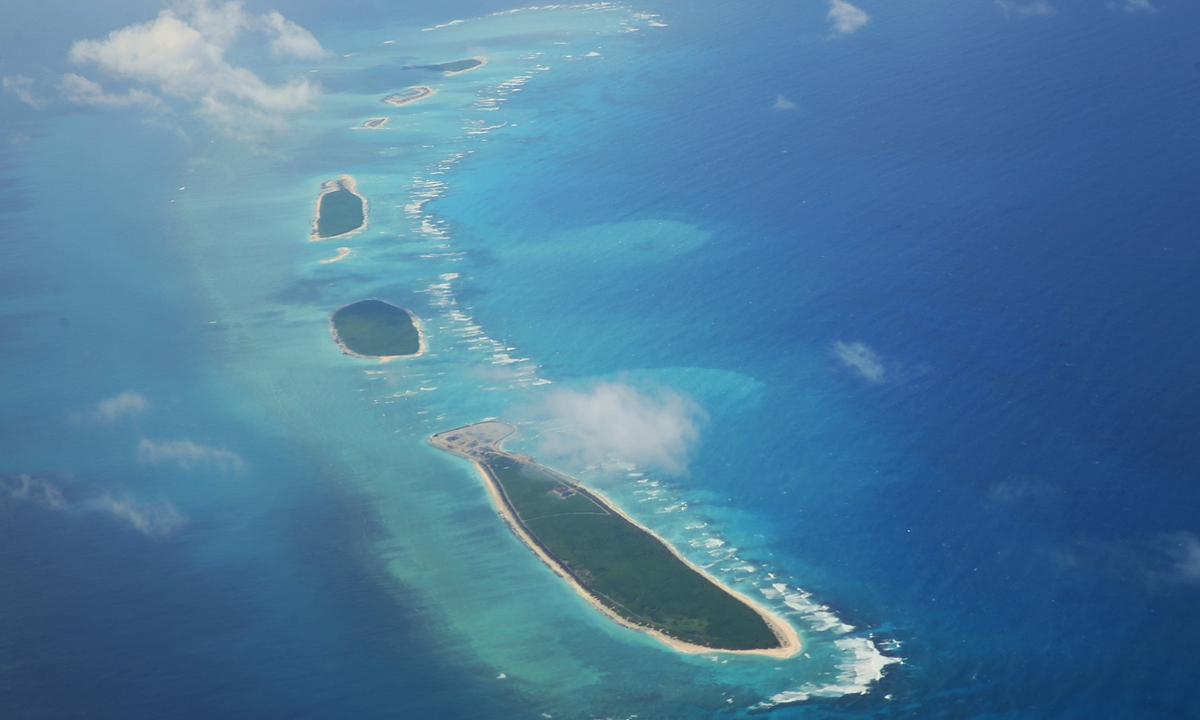New Delhi’s moves with Hanoi on S. China Sea won’t make waves
By Liu Zongyi Source: Global Times Published: 2020/12/22 23:55:43

South China Sea Photo: VCG
In a virtual summit held on Monday with Vietnam Prime Minister Nguyen Xuan Phuc, Indian Prime Minister Narendra Modi stressed that negotiations for a code of conduct in the South China Sea "should not undermine the interests of other countries or third parties in the region," reported the Times of India. The two leaders reaffirmed the importance of security and freedom of navigation and overflight rights in the South China Sea.
This is not the first time (nor will it be the last) that India has poked its nose in the South China Sea. Just last month, Indian External Affairs Minister S Jaishankar outlined India's position at the East Asia Summit, expressing concerns about actions and incidents in the South China Sea that "erode trust."
Indeed, India has stakes in the South China Sea, as the region is an important commercial passage for India. India's trade with South Korea, Japan, China and Russia all passes through it. But New Delhi's concerns about so-called freedom of navigation are groundless.
On the South China Sea issue, New Delhi shares the same idea with Washington in terms of the notion of freedom of navigation. Washington stresses military connotations when it talks about freedom of navigation. It asserts the right for its warships to trespass into the South China Sea freely. But New Delhi objects to Washington's intrusions into India's claimed special economic zone by performing military patrols in the Indian Ocean, which India sees as its domain. In other words, New Delhi adopts double standards on the so-called freedom of navigation question.
Border disputes between India and China have existed for a long time. New Delhi has been seeking a bargaining chip so as to counter Beijing in regards to their border spat. The Obama administration raised the pivot policy and rebalancing Asia-Pacific strategy. Obama visited India in January 2015 and signed a series of agreements with Modi. The two sides released a joint statement called the US-India Joint Strategic Vision for the Asia-Pacific and Indian Ocean Region, which noted the alignment of India's Act East Policy and US' rebalance to Asia. The two sides also affirmed "the importance of safeguarding maritime security and ensuring freedom of navigation and overflight throughout the region, especially in the South China Sea."
When it comes to the Indo-Pacific Strategy endorsed by the Trump administration, it also raised India's status as a pillar. This provides New Delhi an opportunity to wade into South China Sea disputes, although the focus of the Indo-Pacific Strategy is more about the western Pacific and the South China Sea in particular, not the Indian Ocean so much.
New Delhi's naked ambitions mean it does not simply want to make a show of the South China Sea issue. It really wants to counter China in the oceans, as it is boastful of its maritime advantages, especially in the Indian Ocean. Since India became independent, it has aimed at becoming a maritime power - because its colonial invaders from the UK, and also France, came from the sea.
The designer of India's maritime strategy, K. M. Panikkar, who was also the first Indian ambassador to China, heavily stressed maritime security. During the 1990s, New Delhi began to shift its strategic focus to the ocean, although it has not successfully made it so far, only wading in the shallows.
New Delhi has invested heavily in its national defense in order to compete militarily with Beijing. But China's overall strength and military power is also rising rapidly. Because India has no claims whatsoever with South China Sea issue, it is seeking to team up with other claimants such as Vietnam to jointly counter China.
Hanoi, for its part, has been seeking to curry favor with New Delhi in order to draw India into its disputes with Beijing. And New Delhi has signaled support for Hanoi in its flare-up with Beijing over their competing territorial claims in the South China Sea. In 2018, Vietnam invited India to invest in oil and gas development in the waters. In April 2019, in a series of port visits between the two countries, an Indian Coast Guard ship ICGS VIJIT paid a call to Danang, which was an indication of a growing convergence between the two countries.
The biggest worry for external countries such as the US and India is that a code of conduct in the South China Sea will hinder their military actions in the waters. They will therefore have fewer chances to militarily threaten China. They are likely to make a farce in the region in the future. We can see that India will not give up its hope of counterbalancing China by playing the South China Sea card. Nonetheless, New Delhi has little discourse power on this issue. And its maneuvers are unlikely to make any waves.
The author is secretary-general of the Research Center for China-South Asia Cooperation at Shanghai Institutes for International Studies, visiting fellow of the Chongyang Institute for Financial Studies, Renmin University of China and distinguished fellow of the China (Kunming) South Asia & Southeast Asia Institute. opinion@globaltimes.com.cn
Posted in: VIEWPOINT,ASIAN REVIEW